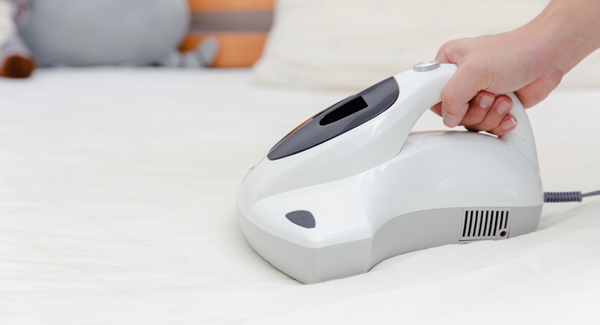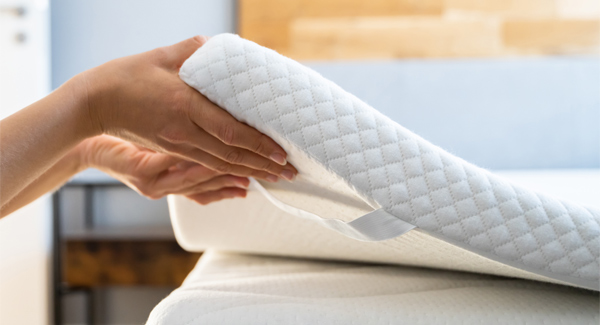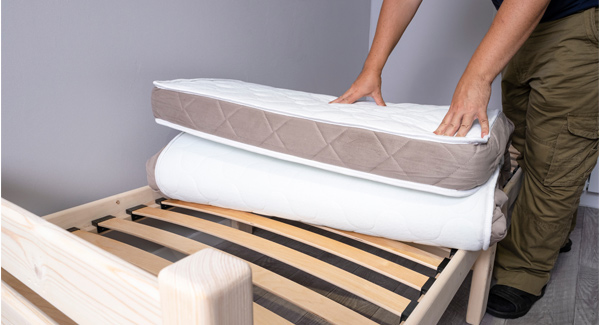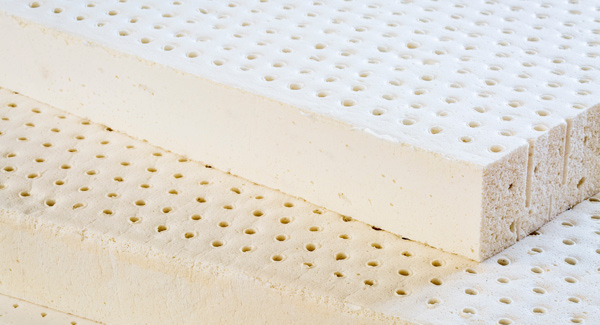Home » Mattress care » Clean & Fresh: How To Clean A Memory Foam Mattress
How to clean a memory foam mattress
Article navigation
- Tony Brown
A memory foam mattress is a significant investment, so you want to ensure it lasts. Each night your mattress absorbs moisture, dirt, dust, dead skin and other debris, creating the perfect environment for dust mites to thrive. Knowing how to clean and maintain a mattress can help prolong its life and promote a healthy and hygienic sleep environment.
Due to the structure of the material, cleaning recommendations for memory foam mattresses may be different from other types of mattresses. If the material gets wet, this can damage the foam and provide the perfect breeding ground for mould and mildew. So when cleaning memory foam, you should avoid using water and cleaning solutions if possible.
Some memory foam mattresses will come with a fixed or stitched cover, while others may come with a removable, washable cover.
You should give your mattress a thorough clean every six months. However, you will need to clean up any spillages straight away to ensure the stain does not set into the mattress. Before attempting to clean a memory foam mattress, you should always refer to the manufacturer’s care instructions, as the advice can vary from mattress to mattress.
Avoid getting memory foam wet
You should avoid getting memory foam wet. Doing so can damage the material and allow mould and mildew to develop. Furthermore, getting the material wet could invalidate your mattress guarantee. So you may want to reconsider having breakfast in bed, going to bed with damp hair, or leaving children or pets unsupervised in bed.
Most manufacturers also advise against the use of hot water bottles. Memory foam is a temperature sensitive material that works best in response to natural body heat. If the hot water bottle leaks, this can stain the mattress and cause significant damage to the material.
Always use a mattress protector
Even if you’re a careful person, accidents can and do invariably happen. A mattress protector provides an extra layer of protection and helps keep your bed clean, dry, and comfortable.
Most mattress protectors are fully breathable and machine washable, protecting your mattress from stains, spillages, and accidents, while promoting a clean and hygienic sleep surface.
However, some thicker mattress protectors may affect how memory foam performs by creating an extra barrier between you and the mattress. So it is vital to ensure that the two are compatible.
Cotton mattress protectors are often a good compromise. They offer a thin layer of protection that safeguards your mattress against stains and spillages without impacting comfort or performance.
Remove the bedding
Before starting, strip the bed by removing the sheets, covers, protectors, blankets, and pillowcases. Washing your bedding weekly helps to decrease the spread of bacteria. Ideally, you’ll want to wash your bedding at a high temperature to kill dust mites, but always follow the manufacturer’s care instructions.
Vacuuming
Over time, dust and dirt can settle onto the mattress. Regular vacuuming helps keep your mattress in good condition and rid your bedroom of any lingering dust particles in the air.
First, use a clean, soft brush to remove dirt, dust, and fluff from the mattress. Then gently vacuum the mattress with a soft brush attachment taking care not to damage the material.
If the mattress contains any loose fillings, you should avoid vacuuming as there is a risk that vacuuming may dislodge the fillings.
Spillages
In the unfortunate event of a spillage or accident, it is vital to act as quickly as possible and not allow the stain to dry and set. After stripping the bed, turn the mattress onto its side if possible, as this helps prevent the fluid from seeping into the mattress.
Dab the affected area with a dry absorbent cloth or clean paper towel to soak up as much liquid as possible. But avoid rubbing as this can push the stain further into the mattress. You may need to apply gentle pressure by pressing down on the material to remove excess moisture.
Then allow the mattress to air dry thoroughly before putting the bedding back on. Open the windows to speed up the drying process by allowing fresh air to circulate around the bedroom. You can also use a fan to blow air on the mattress. But avoid drying with a hair dryer as the hot air can damage the material.
Some memory foam mattresses come with removable, washable covers. Follow the cleaning instructions carefully, which are usually provided on the label sewn into the cover. Some covers are machine washable, while others can be washed with cold water and mild detergent and hung out to dry. Once the cover is removed, you should avoid cleaning the actual foam inside the mattress.
Keep in mind that not all zipped or removable covers are washable. If you’re in any doubt, contact the manufacturer.
Memory foam mattresses are highly absorbent, so you should avoid steam cleaning, soaking the mattress with water, or using cleaning fluids. Doing so can damage the material.
Stains
Removing stubborn stains can be problematic with memory foam as the material is not designed to get wet. Try to use as little water and cleaning solution as possible.
Baking soda
For any lingering smells, sprinkle a thin layer of baking soda over the entire surface of the mattress. Let it sit for a few hours to allow the baking soda to soak up and absorb any lingering odours. Finally, gently remove the powder with a vacuum without damaging the material.
Rotate the mattress
Although memory foam mattresses are single-sided and cannot be flipped over, occasionally rotating the mattress from head to toe may help to even out the wear and extend the life of the mattress.
Final thoughts
Cleaning a memory foam mattress may seem like a thankless task, but it goes a long way to improving your sleep and the air quality inside your home. Cleaning your mattress at least twice a year prevents smells, bacteria, and stains from accumulating on your mattress. So the next time you decide to give your home a thorough clean, don’t forget to give your bed a bit of tender loving care.
Finally, each night we lose around half a pint of moisture and shed dead skin cells, most of which end up in the bed. So it’s important to replace your mattress at least every 7 to 10 years. If you’re sleeping on an old mattress, it may be time to upgrade.
Share this article

About the author
Tony Brown is the founder and creator of The Bed Consultant. His career in the bed industry began in 2002. After graduating from university with a degree in Business Administration, Tony joined one of the largest independent furniture retailers in the UK as a bed consultant. Tony has helped thousands of customers find the perfect mattress.





